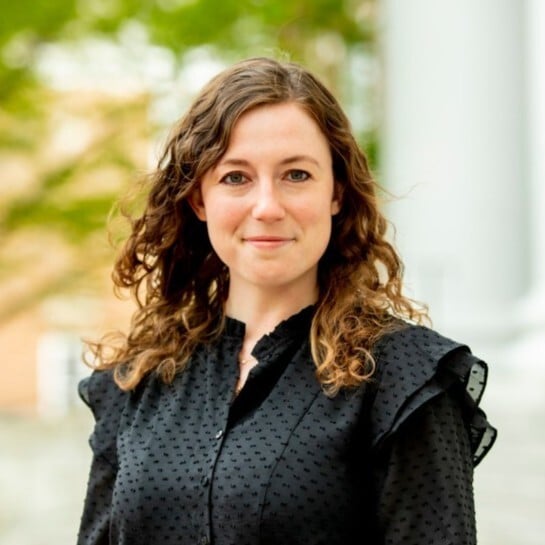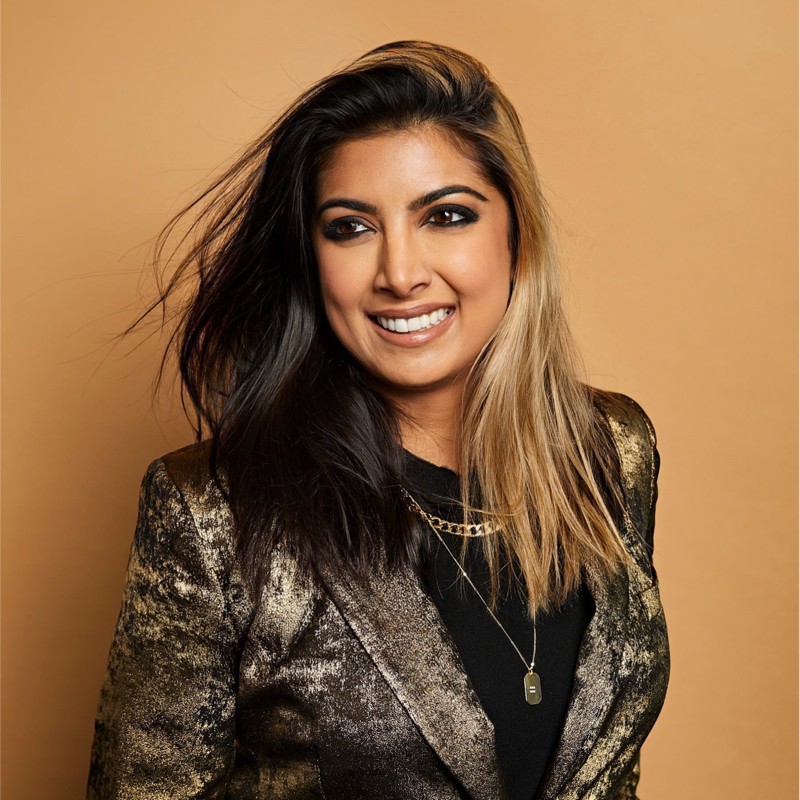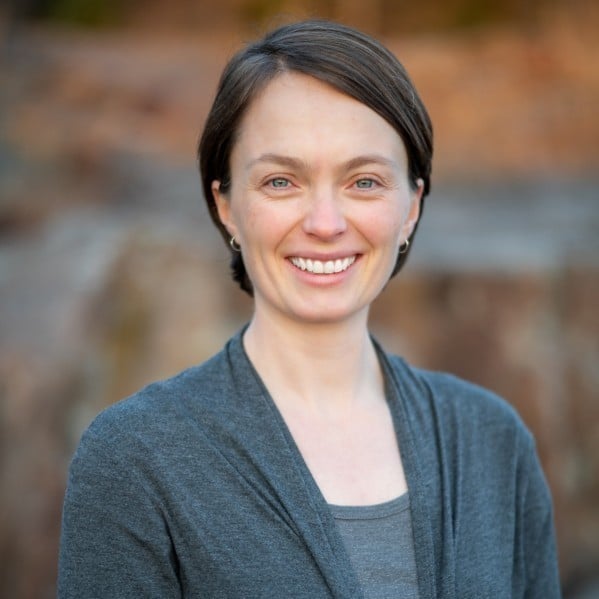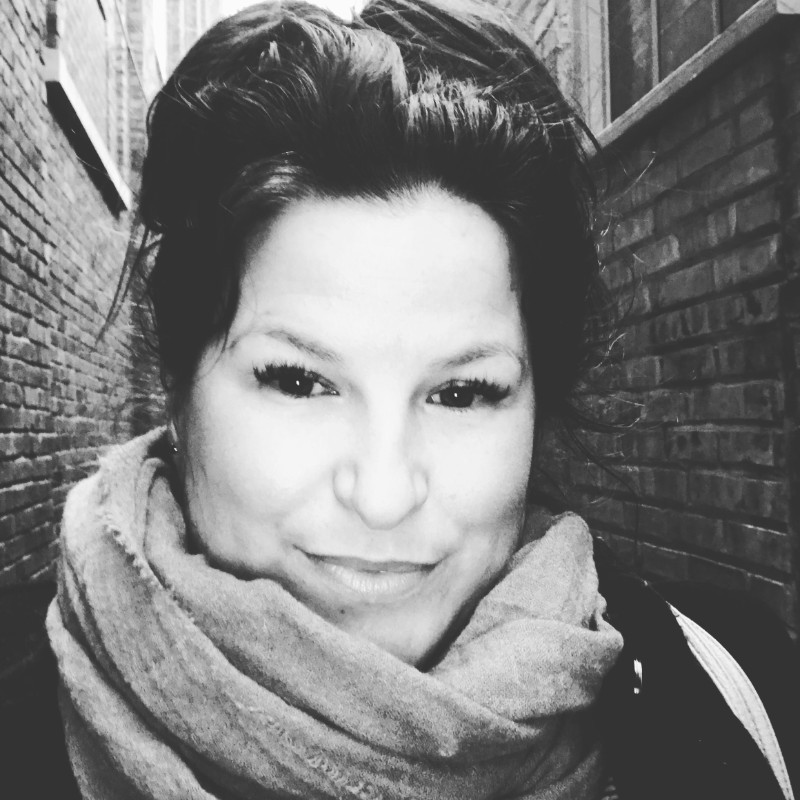Welcome to The Multi-usiverse! Alongside your guide, Garr Punnett, explore worlds of opportunity within the use of physical resources across companies and organizations. In this episode we’re joined by Sandra Noonan, Chief Sustainability Officer of Just Salad. Learn about her work in scaling the reusable bowl program and what organizations need to consider when advancing their own reuse programs. Enjoy Episode Twenty-Eight of the Multi-usiverse!
Audio Transcript:
[00:00:07.210] – Garr Punnett
Hey, masters of the Multiusiverse welcome back to the Multiusiverse Podcast. My name is Garr Punnett, Chief Impact Officer here at Rheaply. We have another great episode with Sandra Noonan, Chief Sustainability Officer from Just Salad. We’re fans of a reusable bowl here at the Multiuser’s Podcast and at Rheaply. We had a great conversation. Got to dive into a little bit about the process of scaling reuse at the organization, as well as what does that mean for when you’re trying to inspire reuse at your own organization? How do you catalyze that action? We got to talk a little bit more with Sandra Noonan. Please enjoy the interview, and also, as always, follow us on YouTube, subscribe wherever you can. Rate us when you can, but then also you can find us at rheaply.com/multi-usiverse-podcast/. Hey, Sandra, thanks for joining us today. Please, could you introduce yourself and talk a little about what you’re doing at Just Salad?
[00:01:06.060] – Sandra Noonan
Sharon? Thanks, Garr. I’m really happy to be here. I am Sandra Noonan. I’m Chief Sustainability Officer at Just Salad. We are a restaurant chain founded in New York City in 2006. So we’ve been around for a long time, and we are now growing faster than ever. So we’re in six US States. Primarily New York, Florida, Chicago, but also New Jersey, Pennsylvania, North Carolina. And our mission is to make everyday health and sustainability possible. And our claim to fame on the sustainability front has traditionally been our reusable bowl program, a circular packaging program that I’m sure we’ll talk about in this conversation.
[00:01:51.790] – Garr Punnett
Yes. I’m glad you already went there. You have two fans here in Just Salad, and ultimately, then I again thought it was appropriate to then go fill up my bowl yes. And have my salad today. Let’s dive into that, though. I would love to learn about the expansion and what that means for sustainability. Being in six states means you are then trying to figure out the supply chains of those six states, trying to figure out the best healthy ingredients that you can get to those markets. What does that mean for somebody in your position in sustainability if someone’s thinking about being in supply chain but then also considering that sustainability effort?
[00:02:35.170] – Sandra Noonan
Yes, great question. Sustainability has to scale. And in the restaurant industry, that means it has to scale across your training programs, your supply chain, and your customers. And so when we think about our Reusable Bowl program, we have embedded circular packaging into our operations. And when I say that, it’s every facet of our operations. So whenever we open a new store, it’s now embedded in our culture and our process and our checklists and our supplier contracts. We are ordering our reusable packaging for the store. Every teammate has to complete a training on how to serve food in a reusable bowl in a manner that’s safe and standardized across all our stores. And so it’s not just managing a supply chain, but it’s embedding it into a culture and a way of operating.
[00:03:41.270] – Garr Punnett
That’s one thing to start. That when it’s the ethos, almost the origin of the company. A whole other thing to scale that I was reading, that it started a little bit with sort of again from a foundation of where the company started really thinking through these things a little bit differently. What has that process been like to consistently integrate that type of consideration we’re going through scaling ourselves. It is always interesting to almost feel like you’re repeating yourself over and over again to consistently be placing this, but how important it is to that scaling process. I bet it’s no different on you all then of just considering the amount of times it goes into education and trainings as well as then even tweaking it here and there to make sure it stays consistent, but ultimately scaling.
[00:04:29.430] – Sandra Noonan
Yeah, it operates on a couple of levels. Scaling such a unique program. One level is again like the standard operating procedure, the playbook for how to execute a circular packaging program every single day in all these different locations. That’s almost the easy part when you have a great operations team that is overseeing that. I think the harder part is keeping your company inspired as to the why of circular packaging. And I think over time you constantly want to be iterating on the story and the reason, and so what I mean by that is for the first many years it just found existence. We ran the program, the circular packaging program and it was great and that was that. But then a couple of years ago we did a year-long life-cycle analysis of our Reusable Bowl program because you have to move with the culture and now the customer needs more data on why this matters. And I think that conducting that very rigorous lifecycle assessment allowed us to quantify the carbon emission savings from choosing reusable versus disposable, the water savings benefits, the energy savings. And I think that was a real step forward for our company in explaining to the customer why this is circular packaging is truly like a climate-related choice.
[00:06:09.310] – Sandra Noonan
So that was a big milestone. Restaurants are so prevalent in our culture, they employ so many people, everyone eats. Fast casual is a huge part of our restaurant economy and our food economy that we do feel that we have the platform to inspire a cultural conversation about the role of disposables in our society at a time when the crises of waste and climate change are escalating and are becoming more clear in the data. So, taking it back to your question, I think you have to operationalize and scale through just the operations part of it, but you also have to continue motivating and creating a narrative for why this really matters.
[00:07:11.850] – Garr Punnett
I love that you bring that up because again, it’s one thing to present an option to a consumer base, a whole other to then continually educate and remind and reiterate why that’s important to make that decision or at least giving the most amount of information to your consumer and saying, hey, you’ve asked for this choice. We’re presenting you the data and the option and then seeing where that pans out. What were the reflections back to you from consumers? I’m curious what types of questions they had about bowls, especially something reusable coming out of the pandemic. What has that been like? What type of reflections have you gotten back from consumers?
[00:07:51.750] – Sandra Noonan
So baseline, our customer loves the reusable bowl because we subsidize the program with free food. Every time you come in, you get a free topping. So Just Salad is in the business of serving healthy food but also giving a pretty nice portion of free food away if you decide to make this pro-planet choice. So I say that because customers have–that establishes a real connection appreciation of the program. So by and large, customers are just very appreciative of it. Coming out of COVID, I think that it was pretty simple, especially after a group of more than 100 scientists, doctors, public health professionals signed a statement saying reusables are absolutely safe. And once we were able to reopen our stores after the worst days of the pandemic, we resumed the program pretty quickly. So we also have a contactless procedure where it’s very rarely trained and so we got it.
[00:09:15.590] – Garr Punnett
I was so impressed with that procedure. It was almost like I actually almost kept grabbing I was presented the bowl on a tray and I kept grabbing the tray and be like, no, just the bowl. And I was like, got it. Just the bowl when I was using it for the first time. Yeah, it was great. I only say that because I’m always fascinated by the harsh reactions of reuse that we always see and how there’s stigma attached to reuse but it can be overcome by just, again, education, explaining it, giving people the option and telling them, hey, there’s also huge benefits. Not only do you get this sort of environmental benefit, but it is nice that Just Salad then presents the extra food option in that as well. I loved when I was reading that you all did make an effort to be like hey, you’re also not getting any less food. These are the same amount of food in each bowl and so you’re not losing out there as well. It’s just very clear where that made so much sense for the consumer. That would be one of also the first concerns. It’s like, am I getting less out of reusable?
[00:10:19.230] – Garr Punnett
No, you’re not. It’s the same thing. Well, tell me a little bit more about your journey then through reuse and how you sort of came into this at Just Salad, what this has meant and really what’s next. I saw there’s actually even a couple of versions of this bowl at least, and I’d love to learn a little bit more too about the evolution.
[00:10:42.270] – Sandra Noonan
Yeah. So the first part of that question I came to Just Salad in 2019, I was really inspired by some leaders in the zero waste space that I was reading about at the time. Beya Johnson, Lauren Singer. These are individuals who have created whole communities of people who are interested in living a low-waste life. And I was googling for fast casual restaurants that would maybe accept a container. I was completely fed up with throwing away a piece of packaging every time I ate something on the go. And I found Just Salad in a New York Times article and learned about their program and pretty quickly after that emailed our founder, who’s now my boss, and said this is great, you need to do more with this. I am so inspired. That led to me joining the company. I was just a raving fan of the company. And so what’s next? The priorities have been to quantify the carbon emission savings of the Reusable Bowl. Now that that project is complete and we’ve established that after two uses of the reusable bowl, you are breaking even and coming out ahead on carbon emissions. Now that that is done and we’ve drawn that conclusion, we have as you alluded to, started thinking about how to make reusables work in digital ordering.
[00:12:25.070] – Sandra Noonan
And so we have rolled out to ten stores, a program called Bring Back where you can order in our app and say I want this order served in a reusable container. And when you opt in for that, when you go and pick up your order, you’ll have it in this green reusable bowl and you can similar to Blockbuster for those of us old enough to remember, or a library lending program, you bring the bowl back, we wash and sanitize and the cycle repeats. So that is phase two.
[00:12:57.790] – Garr Punnett
Phase two you bring up that zero-waste living lifestyle. Again, that was one of my introductions even into circular economy. And zero waste was also Lauren Singer. How has that played into both your life personally, but then also professionally? Something similar on our end. And I don’t even know if Andrew, who’s in the podcast studio, knows this. When we moved into our office, one of the first things I did was ensure that the very simple thing if we moved all the trash cans to the front of the office so that it wasn’t Everyone had to be very conscious of the throwaway decisions that were being made in the office and how much so that everyone could see the waste that was being accumulated in the office. That was something that I felt very personally and then professionally passionate about. How is that sort of again taken hold in your life so that we can inspire more others to think about this and then professionally as well?
[00:13:54.430] – Sandra Noonan
Yeah, it’s such a good question. For me, the throwaway culture we live in has gotten out of control. I started feeling this way many years ago when I started realizing that almost every transaction I have as a human involves throwing something away. For instance, going to the drugstore, I would get a mile long receipt without asking for it. And so in the act of purchasing something I needed, I had to throw a piece of paper away. And behind that piece of paper is a tree. And it just became so prevalent over the years, more and more so, and it just stopped feeling natural to me. And so I think that every generation, hopefully more, our culture has the opportunity to change. And I really feel that living zero waste, or not zero waste, but low waste is a more modern way of living, or should be, than the throwaway culture we have started taking for granted. And I say that because our modern world is one where species extinction, waste and climate change are real. And if that’s the world we live in, the modern response to that is to change our relationship to single use, constant waste.
I don’t think we need to take that for granted. Before the 1950s when plastic became so prevalent, people don’t live that way. So now let’s use our engineering and our modern technology and find a new paradigm. That’s how I think about it.
[00:16:00.960] – Garr Punnett
I will have to send you this picture and you might even know the image I’m talking about. But that was the throwaway culture. And you mentioned I’m bringing this up because you mentioned the 1950s was the original Time article where it was featured the new throwaway lifestyle where you could throw away anything that you would actually be using in the household. And I found this and I was just so fascinated. I actually ended up buying the original Time issue because it was like $17. And I was like, I need that for history. I want to see this and feel it. It was just fascinating to the point where you could buy an original pan that was an aluminum pan that you could then throw away, or a 100% asbestos grill that you could grill on. And it was like, okay, times have changed. So we’ve moved away from that and we can move away from the single-use as well.
[00:16:57.140] – Sandra Noonan
Right? And I think Ron Gonan, the CEO of Close Partners, lays that out. That those time covers and everything. He discusses those in his book A Waste Free World. In The Graduate, the movie The Graduate told there’s this new sector, you should look into plastics and so I think the pendulum swing too far.
[00:17:25.650] – Garr Punnett
What’s the new sector?
[00:17:28.190] – Sandra Noonan
The new sector? The new sector is well, there’s many, right? But circularity is a word that we all have started seeing more and more of. And consumer brands are now emerging that are seeking to transform products that are single use into reusable products, whether it’s makeup, whether it’s clothing. So I don’t necessarily want to point out a sector, but just the fact that there are brands emerging that are rethinking the single use plastic container.
[00:18:07.380] – Garr Punnett
Yeah, I mean, I like circularity just being as prevalent in any types of decision we could maybe make at the corporate, even household level of how are we thinking about everything that we’re using and consuming to the point where we can continue to reuse it and circulate it through our offices and our households. Well, I want to round this out too with a piece of advice then, from you on either professional career in establishing programs, in advancing those programs. How would you sort of give that advice to someone who’s saying, I want to do this? I brought this to my company a bunch. I don’t know who the right person is to talk to, but how do you get something going? How do you really catalyze this action?
[00:18:54.650] – Sandra Noonan
Yes, I’ve given a class on a reusable program and I give a lot of advice in that class. But one way to think about starting a reuse program is thinking about reuse as a system. So I borrowed this from a research piece, but I have a diagram where you think of the system in distinct parts and you start with “what is the container?” So you’re trying to replace a single-use container with disposable one. What is it? How do you get it? Where do you produce it? The next step of the system is consumption. That means everything to do with the end user. How do you make them aware the option exists versus disposables? How do you get them to opt in? How do you transact with that container? So at Just Salad, for example. It’s a little bit different if you’re doing reusable versus disposable, how do you hand it off and prep it? Does it need a different handling? There’s only four pieces. The third is collection. How are you going to get those containers back? If you need to get them back, how are you going to get them back?
And then processing: once you have the containers, how you sanitize and inventory them? Because you will have these in inventory as opposed to disposables, which go in the garbage. And then one last piece to kind of round that out. How much impact do you actually have in terms of carbon emission savings and water use, for example? So my piece of advice is think system-wide and designed for impact. There’s a reason Just Salad doesn’t serve stainless steel containers. There’s way more embedded energy and carbon and stainless steel. It would require you to use that container hundreds of times, roughly speaking, versus the two it takes with our current container because it’s a much lighter weight material. Sorry, long answer, but think of the system. That’s the answer of your impact.
[00:21:18.020] – Garr Punnett
No, I think that is the answer. And that additional consideration you throw in there around materials, I think is super important. The answer isn’t always going to the heaviest and sturdiest because of the additional impact associated with that across just not only the systems locally, but then also where those materials are coming from. I love that. And thank you so much for your time today. Again, walking us through a whole bunch of basics, but then digging into the details a little bit. And again, I enjoyed the salad. I’ve got it right here. Andrew and I will be doing more of this lately. And then again, thanks for the time today.
[00:21:58.070] – Sandra Noonan
Thank you so much. Have a great one.
[00:21:59.960] – Garr Punnett
Thanks, Sandra.
- Description
- Video
- Transcript




